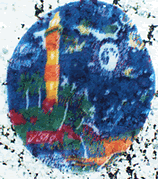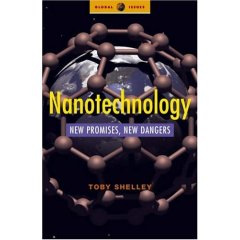Located in Central London is the Bio Nano Centre. Bio Nano is a “specialist product development consultancy” which facilitates both the development and commercialisation of new biomedical and nanotechnology-based products in the UK and Europe.
Set up in 2005, the Centre is a joint venture of Imperial College and University College London. Funding is through the Department for Business, Enterprise and Regulatory Reform (formerly DTI) Microsystems and Nanotechnology (MNT). The London Development Agency provides “infrastructure initiative with support.” A partner in the Centre is The National Physical Laboratory (NPL).
Dr. David Sarphie, CEO has been at the helm for the past six months. Sarphie brings a wealth of experience to Bio Nano. He has worked in both medical and biotechnologies. Past companies include PowderJect, Mini Stress (a stress diagnostics company) as well as Imperial College in the area of medical technology, where he worked on robotic technology for knee surgery.
NW: What makes Bio Nano Centre unique?
DS: “One of the real strengths of the Bio Nano situation is it brings together two somewhat diverse disciplines under one roof and not only that, but two institutions (which) bring what I generally describe as the bio medical expertise of Imperial College (part of the Institute of Bio Medical Engineering).
That is one of the components and the London Centre for Nanotechnology over here at UCL which kind of represents the other components. We have another partner as well, in the National Physical Library, NPL but the two academic institutions primarily represent the somewhat diverse disciplines. Bringing them together, I think makes a real strength to the company.
NW: What is the difference between bio medical and nanotechnology?
DS: Bio medical applications generally are not necessarily revolving around or have anything to do with nanotechnology. Nanotechnology of course is in an absolute nutshell, the study of and understanding of things which are under one and 100 nanometers in size, so very very tiny. So it’s applying that to do beneficial things. What we’re doing is focusing on how we can use these sorts of technologies to dev useful tools for the bio medical and health care communities.
NW: What are your current projects?
DS: We have two projects we are currently working on. The first project we started is with a US based pharmaceutical company. And it’s using a technique that’s been developed in a couple of places. LCN is one of the world’s experts (in) nano cantilevers. It’s a way of effectively looking at the interaction between a drug, in this case an antibiotic and its potential target.
What we’re looking at is how well a nanobiotic can interact with a peptide which mimics a bacterial cell wall so what this antibiotic does in terms of killing the bacteria; it actually gets in the cell wall and disrupts the cell wall. That is the theory.
What we are doing is using a very sensitive technique for looking at that and different types of so-called peptides which mimic different types of bacterial cell walls which are resistant to, in other words, a bacteria that conventional drugs cannot kill. So it’s a so-called Superbug, which, is a very big worry among the medical community. We are looking at a drug which appears to, in my understanding of the clinical studies, appears to be much more effective in those situations with those types of bacteria. I can’t go into alot of detail, but certainly the data seems to back that up. So it’s very exciting stuff. So it’s looking at drug target interaction for different types of anti biotics.
The second project is with a world leading diagnostics company based in Scotland who have asked us to characterise some glucose test strips that they’re developing. We have some very sophisticated equipment and expertise available at the Uni for looking at, characterising and understanding the fine micro nanostructures. This will help them to further develop and improve their test strips.
NW: Why are you based in London?
DS: The company was set-up as a joint venture between Imperial College London and University College London and received substantial funding from the Department of Trade & Industry (DTI – now known as the Technology Strategy Board) and from the London Development Agency. The specific aim of the joint venture was to create a Centre of Excellence in bio and nano-technology in London.
NW: What investment opportunities do you see in Europe and the UK?
DS: A number of early-stage university spin-outs are being set up in the UK and Europe to take advantage of new developments in the field. This will only escalate in the years to come, although a number of fundamental issues related to application of nanotechnology to medical and pharmaceuticals fields remain to be resolved.
NW: What do you think is the future of nanoscience and nanotechnology?
DS: I think we will see that nanotechnology and nanosciences can help address fundamental problems in the medical and biotechnology fields in years to come although it’s important not to over-hype its potential too early or to forget the likely long timescales for developing fundamentally-new products.
IP
Any Intellectual Property developed via Bio Nano belongs to either the company working with the centre or the two colleges. In the past Sarphie has enjoyed working on such projects. Although not part of their business model, eventually owning its own IP could be beneficial for Bio Nano.
The future of nanotechnology
Overall, Sarphie is optimistic about nanotechnology. He has a healthy amount of scepticism about the hype. One area where he sees real potential is in solar energy. He like others involved in nanoscience and nanotechnology see the potential for cross platform technologies. Bio Nano looks set to be among those paving the way in medical technologies and beyond.






